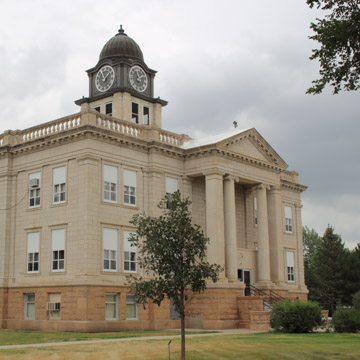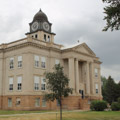The Sully County Courthouse sits on a 1.5-acre parklike setting on the north side of Onida, a small town located in central South Dakota approximately 35 miles north of Pierre. Sully County was established by the Dakota Territory Legislature in 1873, but not officially organized until 1883. Although the first county seat was Clifton, eight miles west, the honor fell to Onida in 1884 after a contentious vote. Construction on the current courthouse began in 1911, since the county had outgrown its original offices.
Like many early-twentieth-century public buildings, architect W.M. Rich of Deadwood’s Black Hills Company designed the courthouse in a Classical Revival style. Dominating the facade is a full-height projecting portico with an entablature and pediment supported by two round Ionic columns and two square Tuscan posts. The raised basement is of rusticated stone and the upper two stories are brick with ashlar Bedford stone facing. Other classical details include a Palladian window above the main entrance, a roof balustrade, and a two-stage square cupola.

















